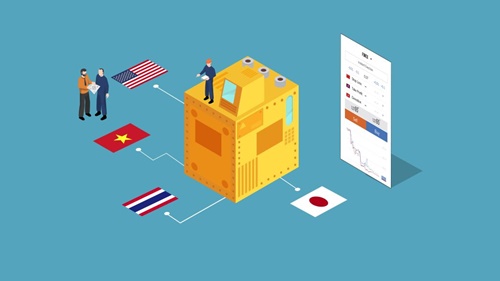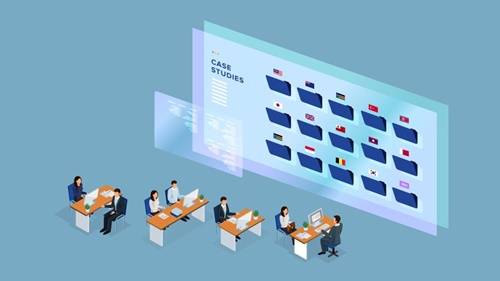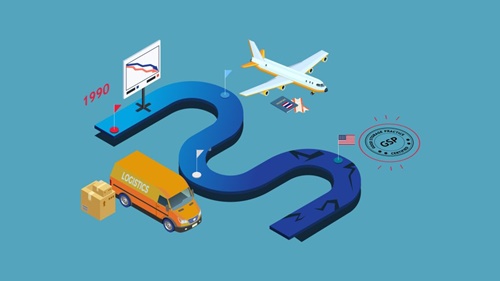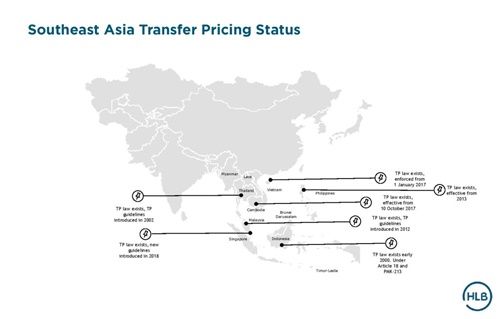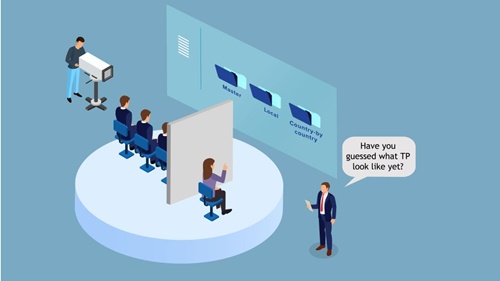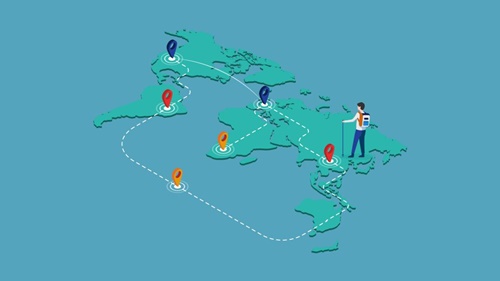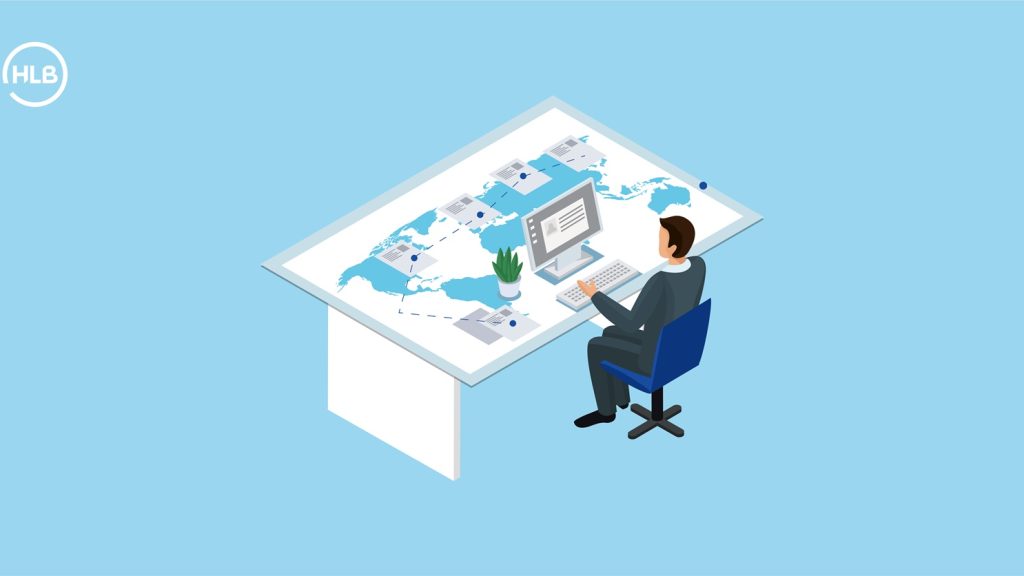Everything you’ve ever wanted to know about Transfer Pricing in Thailand (with examples)
HLB Thailand Transfer Pricing Team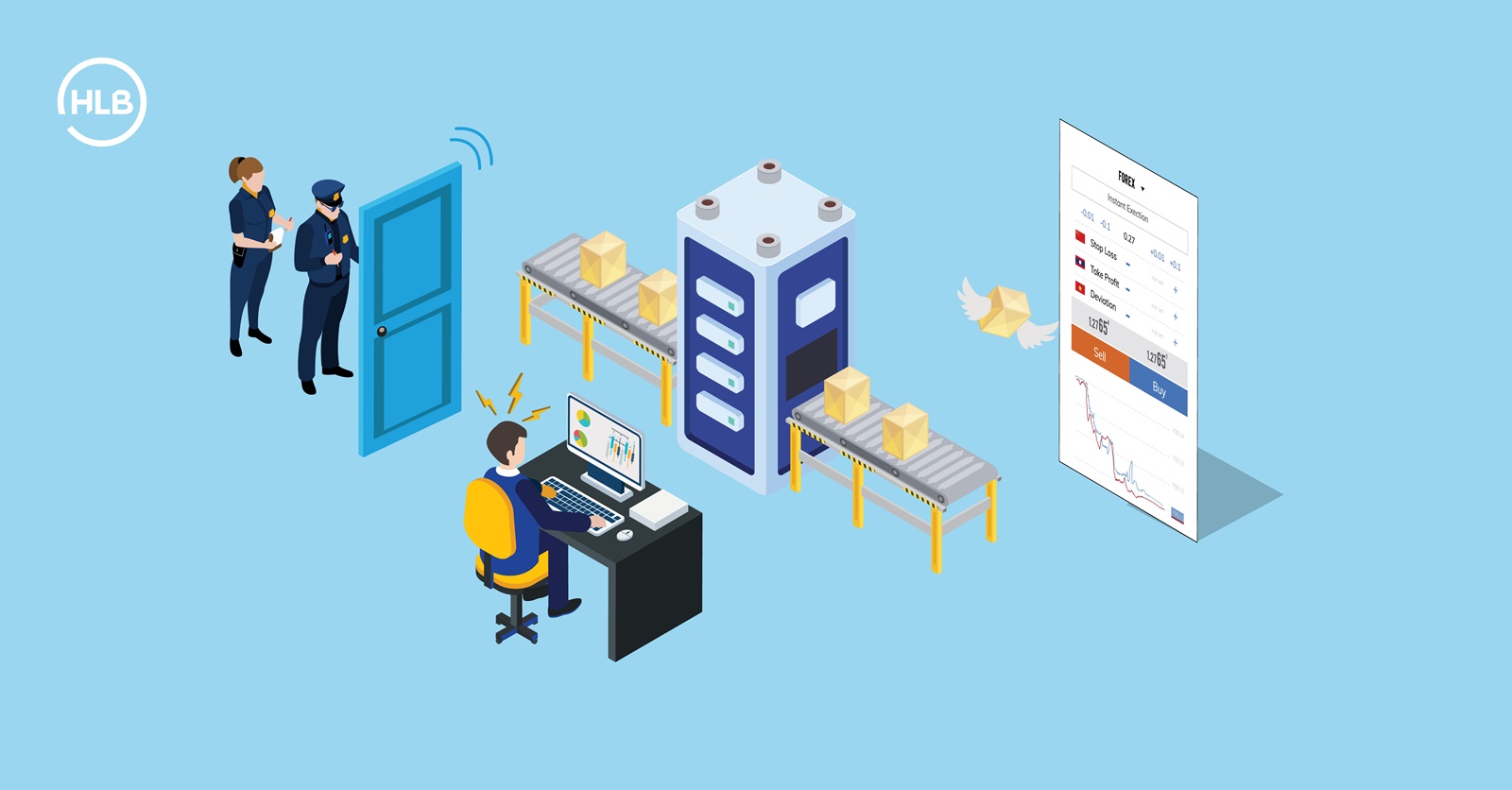
We understand that getting your affairs in order for tax purposes can be a challenging task because of the numerous and growing tax reporting and compliance requirements.
Multinationals face a further burden as the tax rules around Transfer Pricing continue to evolve and are enforced, mainly due to international developments to address tax planning by multinationals.
Countries around the world have banded together over the last few years to agree on the implementation of Transfer Pricing laws to address tax planning on a global basis. So its best to prepare now to be compliant in Transfer Pricing and not when the Revenue Department is knocking at the door.
Our guide will help you demystify the rules surrounding Transfer Pricing. Here, we’ll cover everything you need to know about Transfer Pricing in Thailand. We have it all, including the new changes coming and how you and your business can prepare.
Remember, it’s easier to be compliant than it is to be audited.
Chapter 1: What is Transfer Pricing?
Contrary to popular belief, Transfer Pricing is not as complex as it may seem. It’s actually fairly simple once you get your head around a few basic concepts. So, before descending into a fit of “TP” panic, take a breath and read on.
Transfer Pricing is the price agreed upon to transfer goods or services within a group of companies. Any deal between companies with the same owner or parent company – or in any way under the same control – will be subject to Transfer Pricing.
Tax authorities around the world implemented the Transfer Pricing guidelines created by the Organisation for Economic Cooperation and Development (OECD) and then localised them to suit their requirements.
By implementing Transfer Pricing laws, tax authorities around the world are trying to make sure that companies are not under or overcharging while dealing with related parties within a group. This way, they make sure they get a fair share of taxes in their respective jurisdiction.
Say your company owns a manufacturing business and wants to sell those goods to a distribution company operating within your group. Then Transfer Pricing is just the price you’ll charge your related company.
There might be a burning temptation to sell those manufactured goods to your related distribution business at a special rate. However, you’ll have to resist this temptation if you want to stay on the right side of the Transfer Pricing laws in Thailand.
Charging a price that is either deliberately lower than the market price or deliberately inflated to shift profits will incur some hefty fines.
It doesn’t matter who you are, your company’s functions, or the nature of your relationship with other companies under the same control or ownership. Any deals made between your company and another in the same group will be subject to Transfer Pricing.
A brief history of Transfer Pricing
Over 70 countries worldwide have Transfer Pricing laws in place. The most widely-utilised Transfer Pricing rules were outlined by the Organisation for Economic Cooperation and Development (OECD).
The OECD didn’t exist until 1948, when it was summoned into existence to rebuild the global economy following World War 2. As the OECD developed, it evolved and grew in power and relevance. So too did the rules of economic cooperation.
With 38 of the most mature economies as member states, the OECD has played an instrumental role in developing policy as needed for an increasingly globalised and economically interdependent world.
With such a tangled web of connections developing, more sophisticated policies were needed to govern growing economies. Around 1988 the OECD drafted a white paper on Transfer Pricing, though it wasn’t until 1994 that the white paper was adopted as policy for the OECD.
Since then, the OECD’s Transfer Pricing guidelines have mutated to meet the demands of an ever-shifting global business landscape.
At present, the OECD’s guidelines are basically the global bible of Transfer Pricing.
This doesn’t mean they’re ironclad rules for the world. Plenty of countries have adopted and adapted, tweaking and tuning the OECD’s guidelines on Transfer Pricing to meet national interests.
In some parts of the world, there are even broader definitions of Transfer Pricing. Some nations apply Transfer Pricing rules to deals with third-parties. This is provided the relationship between the parties involved in the transaction is considered ‘close enough’.
What ‘close enough’ means exactly will vary from country to country. So, always check which jurisdiction you’ll be working within.
It’s also worth remembering that Transfer Pricing guidelines apply locally and internationally. This means different laws will apply to different transactions, depending on the location of the parties concerned.
Transfer Pricing Terminology, simplified
Benchmarking Study:
If you want to be compliant with Thailand's Transfer Pricing rules, you’ll need to conduct a local Benchmarking Study specific to Thailand. Getting the right prices from comparable companies will allow you to work out what price to charge a related company when involved in a transaction that falls under the ambit of Transfer Pricing.
You need to show that you’ve calculated your agreed price based on the market rates. You also need to demnostrate that you’re charging a related company the same price you would be charging any other company for your goods or services.
BEPS:
Base Erosion and Profit Shifting (BEPS) is the framework developed by the OECD in 2016 in co-operation with G20 countries that has been adopted widely around the world. It aims to prevent companies from artificially shifting profits to lower-tax jurisdictions, or tax havens, through various means, including inappropriate Transfer Pricing arrangements. The BEPS framework has 15 action points to address strategies used by MNEs to exploit gaps and mismatches in tax rules to avoid paying tax.
BEPS Action points 8-10 provide Transfer Pricing guidance to ensure that Transfer Pricing outcomes are better aligned with value creation of a MNE. In this regard, Actions 8-10 clarify and strengthen the existing standards, including the guidance on the application of the arm’s length principle.
Under BEPS Action plan 13, all large MNEs are required to prepare a country-by-country (CbC) report with aggregate data on the global allocation of income, profit, taxes paid and economic activity among tax jurisdictions in which it operates. This CbC report is shared with tax administrations in these jurisdictions, for use in high level Transfer Pricing and BEPS risk assessments.
BEPS Action 15 offers concrete solutions for governments to close loopholes in international tax treaties with the Multilateral Convention to Implement Tax Treaty Related Measures to Prevent Base Erosion and Profit Shifting (Multilateral Instrument). The Multilateral Instrument allows governments to implement agreed minimum standards to counter treaty abuse and to improve dispute resolution mechanisms while providing flexibility to accommodate specific tax treaty policies.
Functional Analysis:
Essentially, a blueprint for the related companies, presented as an overview of the roles and relationships of all related companies or entities and how they share assets, assume risks and generally interact with one another.
Functions, Assets, and Risk analysis (FAR) is the heart and soul of the Transfer Pricing Documents. Specifically, FAR:
- Specifies the functions undertaken by parties to the transaction.
- It establishes the different department’s functions in order to support the business for inter-company transactions.
- It defines the role of the other party in the transactions.
- Defines the assets the company utilised to function its business operations.
- It shows the nature and types of risks undertaken by the respective parties to the transactions; and
- It outlines the risks related to the transactions and who bears such risk.
All of these points lay down the foundation of “characterisation” of the company.
Comparability Analysis:
It’s crucial that you’re able to show how you arrived at your price when the taxman comes to check all is in line with Transfer Pricing guidelines.
Controlled Transaction or Related Party Transaction:
A transaction of goods or services between two related parties. This could be between a parent company and one of its subsidiaries or between two subsidiaries owned by the same parent company. When dealing with each other, these related companies are required to apply the arm’s length principle.
Uncontrolled Transaction:
This is exactly what you might think it is after having read about controlled transactions. It’s a transaction between two independent companies who aren’t related and are therefore not subject to Transfer Pricing.
Arm’s Length Principle:
This principle provides that the price agreed in a transaction amongst two related parties must be the same as the price agreed in a comparable transaction between two unrelated parties.
Intangibles:
An ‘intangible’ is something that belongs to a company but is not a physical or financial asset – e.g., intellectual property or organizational know-how. There are two types of intangibles:
- Marketing intangible: used in customer-facing business, i.e., trademarks, trade names, customer lists, customer relationships, unique names, etc.
- Trade intangible: includes patents, know-how, designs, and models used to produce goods or the provision of services, etc.
Whenever a company’s intangible assets are used for commercial purposes by another party, a fee in the form of royalty must be paid – either a fixed value or a percentage (depending on the agreement) of the revenue gained through their use.
Interquartile Range:
Also known as IQR, it provides a range by ignoring the lower 25% and the highest 25%, which can be considered as outliers. IQR is a measure of where the “middle fifty” is in a data set. Where a range is a measure of where the beginning and end are in a set, an IQR is a measure of where the bulk of the values (data points) lie.
Multinational Enterprise:
It’s often abbreviated down to MNE. It’s a way to refer to a group of related companies that collectively operate in two or more countries. Think Facebook, Google, or Amazon who all have offices around the world, not to mention a heap of subsidiaries .
Transfer Pricing Methodologies:
Selecting a Transfer Pricing method is a top-down decision that depends on the availability of tools and resources that have been designed to help businesses identify the most favourable and appropriate methods for their Transfer Pricing strategies.
There are five OECD prescribed methods categorized as either a Traditional Transaction Method or a Transactional Profit Method. A brief introduction of the Transfer Pricing methodologies prevailing in Thai Transfer Pricing Regulations is outlined below:
1. Traditional Transaction Methods:
The Comparable Uncontrolled Price (CUP) method, Resale Price Method (RPM) and the Cost Plus Method (CPM) are considered traditional methods for establishing the arm’s length principle in Transfer Pricing.
- Comparable Uncontrolled Price (CUP) Method:
The comparison of the price charged for property transferred or services rendered in a controlled transaction with the price charged for property transferred or services rendered in a comparable uncontrolled transaction. The key here is the stringent comparability standards in terms of nature of goods and services, circumstances, price, geographical locations of the parties to the transactions, and other pertinent factors.
There are two situations under CUP: internal and external. The internal CUP compares the conditions of comparable transactions between the taxpayer itself and an unrelated party and the external CUP compares the conditions of comparable transactions between two unrelated parties.
- Cost Plus Method:
The comparison of the mark-up on production costs, including direct and indirect costs, from a transfer of property and provision of services in a controlled transaction, with the mark-up on production costs, including direct and indirect costs, from a transfer of property and provision of services in a comparable uncontrolled transaction.
You’ll need to be sure you’ve taken assets and risks into account too, as well as the current market conditions. Essentially once you’ve added the cost plus mark-up, you should have a transfer price in line with the arm’s length principle.
- Resale Price Method:
The comparison of the resale margin of a controlled transaction, in which the purchaser of property in a controlled transaction (i.e. purchase of goods from related entity) receives from reselling the property in an uncontrolled transaction (i.e. sale to unrelated entity), with the resale margin from a purchase and resale of property in a comparable uncontrolled transaction (i.e. purchase and resale of goods undertaken amongst unrelated entities).
The RPM evaluates whether the amount charged in a controlled transaction is at arm’s length. This is based on the gross margin realised in comparable uncontrolled transactions. This method is generally used for distributors that resell products without physically altering them or adding substantial value to them
2. Transactional Profit Method: Profit Split Method (PSM) and Transactional Net Margin Method (TNMM) are considered traditional profit methods for establishing the Arm’s Length Principle in Transfer Pricing.
- Profit Split Method:
This method looks at profits and how they ought to be split in a controlled transaction. Splitting the profits in an economically valid way gives an approximate division of profits that would have been found following a transaction that meets arm’s length standards.
The PSM determines arm’s length profit based on combined profits derived by the counterparties to the transaction. PSM is mostly used in cases where the parties to a transaction make highly integrated or complex contributions to the transaction, often involving the creation of an intangible asset.
- Transactional Net Margin Method:
The TNMM examines the net profit that a company derives from a controlled transaction relative to an appropriate base (e.g., costs, sales, or assets). Typically, TNMM is used as financial data on comparable independent companies is commonly publicly available. Moreover, TNMM is also more tolerant of accounting inconsistencies as its use of net operating profit analysis, which naturally captures both cost of goods sold and operating expenses, allows for a more consistent comparison of financial results albeit differing accounting treatments to cost classification.
Read More: Transfer Pricing Terminology Broken Down and Explained
International case studies
There are more than just a few high-profile Transfer Pricing case studies underscoring the importance of getting your Transfer Pricing documentation in order. While these scenarios may not apply to you directly, it’s important to be aware of the potential complexities and consequences of getting your Transfer Pricing wrong.
One famous case – so infamous in fact that it has become synonymous with corporate tax evasion – is the Double Irish with a Dutch Sandwich.
Beyond the bizarre title, a Double Irish with a Dutch Sandwich is essentially a ploy to use Irish and Dutch subsidiaries to shift profits from higher-tax jurisdictions and into low or no-tax jurisdictions.
Ireland is notoriously generous to corporations. They even attempted to prevent an EU court case that would have had Apple pay Ireland backdated taxes that it had successfully avoided.
In this case, billions of dollars were being siphoned through a network of subsidiaries with the express intent of avoiding taxation in countries where corporation tax was high.
One of the ways to do this is through profit shifting, which is accomplished through Transfer Pricing.
Google reportedly shifted $22 billion through a Dutch company that, in turn, transferred it to an Irish company based in Bermuda. This left Bermuda to collect $0 in tax from all this wealth due to its national taxation laws.
This particular case centered around the issue of intellectual property and licensing, which allowed Google to shift profits from the US to Ireland but has since discontinued doing so from 2020.
Similarly, in 2017, the Australian Tax Office won big against Chevron and netted an AUS$340 million tax bill after a court ruled on an intercompany loan between Chevron Australia Holdings and its US subsidiary Chevron Texaco Funding Corporation.
The key issue in this case was the interest rate with which the $2.5 billion loans were agreed – with the Australian Tax Office arguing that 9 percent interest violated the Arm’s Length Principle, and Chevron was forced to cough up. This was another landmark case as it provides a precedent for future intercompany loans conducted through Australia.
Yet another case, a 2009 landmark ruling from Canada, highlights the intricacy of arm’s length policies and the sublime complexities of Transfer Pricing laws.
The case centred around General Electric Capital Canada Inc. (GE Canada) who, in 2009, won the right to use its parent company’s name to acquire a cheaper loan for a subsidiary.
The Canadian tax administration argued that the guarantee provided no economic benefit to GE Canada and, therefore, its arm’s length price would have been nil. GE Canada enjoyed a so-called “implicit support” from its Parent.
The parent could never allow its like-named affiliate, such as GE Canada, to default on its debt, as it would damage the Parent’s own AAA credit rating and increase its borrowing costs significantly. Due to this “implicit support”, GE Canada would have had the same credit rating, which would allow them to borrow the same amount of money at the same interest rate without the guarantee.
GE Canada argued that the approach of the Canadian tax administration was flawed. They stated that it wouldn’t allow evidence on the price of a comparable arm’s length guarantee arrangement, as required by the Transfer Pricing rules.
The basis of the Canadian tax administration’s position was simply that the guarantee was not necessary for GE Canada’s business.
GE Canada presented expert evidence that, without the guarantee of its credit, its rating would have been BB instead of AAA, and its cost of borrowing would have been higher.
The court held that the factor of “implicit support” is relevant in an arm’s length analysis under the Transfer Pricing rules. It also noted that Transfer Pricing rules could apply if the value of the benefit received from a transaction is nil and, consequently, the transaction cannot be compared with an arm’s length transaction.
In its analysis, the court compared the borrowing cost of guaranteed debt as opposed to the borrowing cost of unguaranteed debt. By relying heavily on expert witnesses, the court determined that:
- GE Canada’s stand-alone credit rating without the guarantee and without the “implicit support” from the Parent would have been B+ to BB-.
- When the factor of “implicit support” from the Parent is taken into account, GE Canada’s rating without the guarantee would only go up to BBB-/BB+.
- The GE Canada’s interest cost savings afforded by the guarantee was approximately 1.83%.
Based on this evidence, the court concluded that the 1% guarantee fee did not exceed an arm’s length price because GE Canada “received a significant net economic benefit from the transaction.”
This gives the subsidiaries a significant advantage in terms of access to finance. Also, the judge noted that the OECD framework is simply a guideline.
Recently in February 2023, the US Tax court, in the case of US vs. 3M Company And Subsidiaries, agreed with the Internal Revenue Service (IRS) that 3M’s US (a wholly owned US subsidiary of 3M Parent) income should be increased by royalties from 3M Brazil’s (Brazil based 3M Group entity) use of its trademarks and other intellectual property – without regard to the legal restrictions on related party royalty payments in Brazil.
While arguing the case before the Court, the IRS’s position was that the Section 482 [of the Internal Revenue Code (IRC)] adjustment does not consider the effect of the Brazilian statutory restrictions unless certain conditions are met, and that the Brazilian statutory restrictions did not meet those conditions. The blocked income rules in the IRC requires that the foreign law restriction apply equally to controlled and uncontrolled parties, be publicly announced, and prevent the payment or receipt of an arm’s length amount in any form.
As such, every case would need to be looked at individually, highlighting the value of hiring a professional when dealing with Transfer Pricing.
If you have any questions about your company’s Transfer Pricing documentation, book a free one-on-one meeting with our specialists now.
Chapter 2: Transfer Pricing in Thailand
Now that we’ve covered the basics, it’s time to look a little closer to home.
Thailand is a nation on the move, but the Thai economy has had a rough ride of late.
As a pre-COVID tourism hot spot and Southeast Asian logistics hub, the Thai economy has long since bounced back from the crash of the 90s. The nature of key industries is changing, though, and unless Thailand keeps up, it could still be left behind.
Moreover, the Thailand Revenue Department neither relaxed nor made any temporary amendments in any of the existing Transfer Pricing provisions for the taxpayers during the COVID-19 pandemic.
Many MNEs use Thailand as a manufacturing and distribution hub, with subsidiaries operating as low risk or routine companies. Naturally, the Thailand Revenue Department demands a return for such companies on a year-on-year basis. In case Thai taxpayers have low or no profitability (specifically in a situation like the COVID-19 pandemic), these companies are likely to be challenged by the Thailand Revenue Department. In such cases, they are needed to justify their decline in profitability through Transfer Pricing documentation.
Read More: The impact of COVID-19 on your Transfer Pricing arrangements
It’s also worth noting that those making over 200 million Baht in revenue will be subject to extra scrutiny and will need to provide a Transfer Pricing Disclosure Form, as well as the Transfer Pricing documents. But for those beneath the 200 million Baht threshold, getting and staying compliant is still no easy feat.
What’s changing in Thailand?
Now that Thailand is on the way to fully adopting the OECD guidelines on Transfer Pricing, any company engaging in intercompany transactions will be affected and will need to prepare the required documents accordingly.
The Thailand Revenue Department has been exceptionally active in updating and releasing newer and stricter guidelines to curb tax evasion. The latest rules and procedures include:
- Application of internal and external comparables;
- Instructing the assessment officers when inspecting the pricing of related party transactions and determining any adjustments to be made;
- New regulations of filing Country-by-Country reports;
- Compulsory filing of the Transfer Pricing disclosure form online; and
- Illustrating the scenarios when MNE group entities are considered to be directly or indirectly related to Thai entities.
Ignorance is no excuse, we’re afraid. If anything, telling the tax department you didn’t know about the changes will likely be used against you when it comes to determining your fines or penalties.
Read More: Year-end transfer pricing adjustments and customs valuations
Thailand’s adoption of OECD rules on Transfer Pricing
There is a popular misconception about the Thai Transfer Pricing rules. Many seem to believe that, because they only needed to provide Transfer Pricing documentation on request from the tax department, they don't need to have it ready in advance. This is not only wrong, but can have some serious consequences.
Once the tax department decides to audit you, it’s extremely unlikely that you’ll get away without paying them something. Preparation will help you mitigate some of the harsher penalties. Anyone caught having no Transfer Pricing documentation will be in trouble.
Here’s how it would play out: if the tax department requests documentation to prove you’re compliant with Transfer Pricing, you have 60 days to present it to them. However, you can extend another 60 days on top of this, making it a total of 120 days from when you received the request, or a further 60 days again if it’s your first time having these documents requested, making it a total of 180 days.
BEPS 2.0 – OECD’s Two Pillar Framework
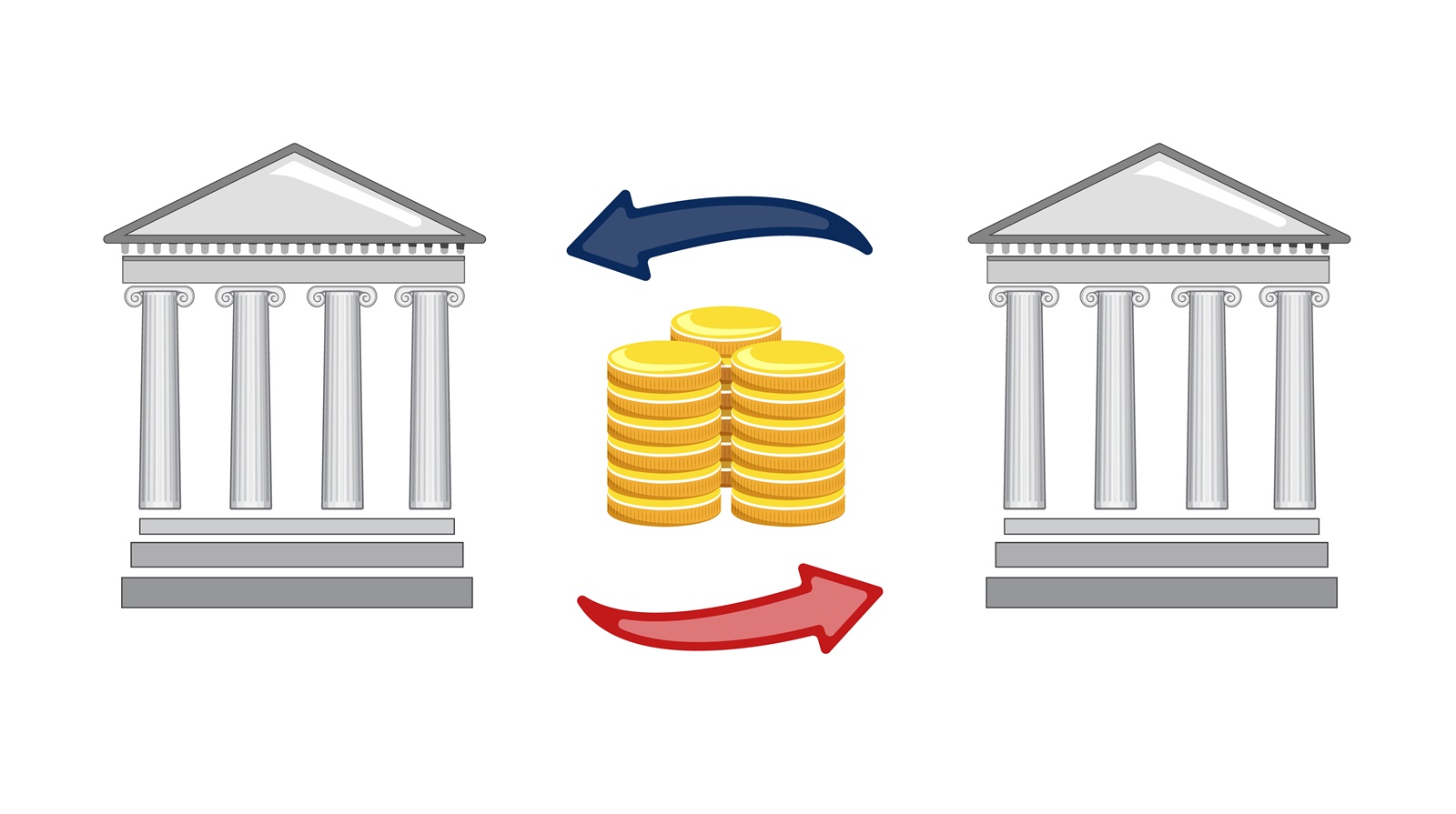
Pillar One focuses on reallocating taxing rights, while Pillar Two aims to ensure a minimum level of taxation for MNEs. The OECD’s “blueprints” on the ‘two-pillar approach’ focus on nexus and profit allocations and BEPS challenges. So far, about 140 jurisdictions, including Thailand, have endorsed OECD's BEPS 2.0 initiative.
How is Thailand getting ready for it?
In March 2024, the Thai Revenue Department (TRD) initiated a public consultation regarding the draft law on the Pillar Two scheme. The proposed legislation lays out the framework to establish a minimum tax rate for MNEs, enabling the collection of top-up taxes following the Global Anti-Base Erosion (GloBE) rules. The TRD will be tasked with the responsibility of collecting this top-up tax. The draft law will apply to members of MNEs in Thailand, with consolidated annual revenues of at least EUR 750 million (approximately THB 29.7 billion). The Thai cabinet approved measures to incorporate Global Minimum Tax regulations and tasked the Thailand Board of Investment (BOI) and the Ministry of Finance to carry out relevant actions. It is important to note that the Pillar One scheme has not been included in Cabinet’s approved measures and the Pillar Two scheme has been approved, which applies a minimum tax rate of 15% for each jurisdiction in which an MNE operates, with a top-up tax to be paid in case the ETR in a jurisdiction falls below the minimum.
Read more in detail about Thailand’s adoption of the Pillar Two approach.
What about Southeast Asia?
The deadlines to furnish Transfer Pricing documentation with the Thailand Revenue Department is relatively more relaxed in comparison to many Southeast Asian nations. The Philippines, Malaysia, and Vietnam, for example, give companies just 14-15 days, with a possible 15-day extension (not necessarily), making it next to impossible to get Transfer Pricing documentation in order. For Indonesia, that’s seven days upon request or 30 days in case of tax audits.
Neither Thailand nor its regional neighbours are permanent members of the OECD. However, Thailand and neigboring countries like Singapore, Malaysia, Thailand, Vietnam, and Indonesia have all signed up to the four minimum standards of BEPS – Action Plan 5 on Harmful Tax Practices, Action Plan 6 on the Prevention of Tax Treaty Abuse, Action Plan 13 on Country-By-Country Reporting and Action Plan 14 on Mutual Agreement Procedures.
Which companies will be affected?
The short answer is everyone involved in intercompany transactions or who does deals with related parties. So, don’t worry if you’re a small to medium enterprise, Transfer Pricing will most likely not be a concern unless you engage in intercompany transactions.
If your company earns more than 200 million Baht in revenue per year, you will need to make an additional disclosure through the Transfer Pricing Disclosure form.
Typically, preparing quality Transfer Pricing documentation requires time and effort to capture the correct picture, which cannot be produced overnight.
This is assuming you’ve already got a good sense of what to do with your economic analysis and your benchmarking for the comparative analysis.
If you haven’t prepared your Transfer Pricing Documentation and have not submitted the Transfer Pricing Disclosure form, or if you provided incorrect or inaccurate information, get ready to pay some fines. It’s up to 200,000 Baht for not presenting or providing incorrect or inaccurate information in the documentation.
Once you’ve failed to produce your documentation, then you are fully open to investigation from the Revenue Department, and should the Thai tax department find irregularities or suspect you of having tried to shift profits or evade tax through Transfer Pricing, the penalties and surcharges for underpayment of tax are high, as you would expect.
We strongly suggest getting your paperwork ready now.
Chapter 3: How will I be affected by Transfer Pricing?
If you’re engaging in deals with related parties subject to Transfer Pricing, then listen up. Here’s your handy guide on what to prepare, what's changed , and how you can stay ahead of the curve.
While by no means exhaustive, this guide should prepare you for some of the additional changes that are likely coming while providing you with a general idea of what will be expected of your business.
Why should I care about Transfer Pricing?
Any business that has related party transactions and doesn’t have Transfer Pricing documentation in place is likely to be hit hard.
The value of preparation in advance cannot be stressed enough. Think before you leap into a new deal with a related company or start planning a controlled transaction.
Enforcement will be improving over the coming years.
If you don’t have your Transfer Pricing documentation and arrangements prepared, you risk being singled out by the revenue department. If they want to choose any particular timeframe within a five-year period, they will be able to. This means for example that the revenue department could request your documentation for the 2022 year at any time until May 2028 (for December year-ended companies).
Similarly, suppose your company is generating over 200 million Baht in revenues each year, you’ll need to pay particular attention to the Transfer Pricing Disclosure form – not only is it crucial for when the revenue department wants to check your compliance with the law, but it will be used later as a risk assessment tool by the revenue department as a means of determining at-risk businesses.
Any missing transaction or explanation in the Transfer Pricing documentation or the disclosure form could have dire consequences for you and your business. It’s time to get into the habit of treating Transfer Pricing documentation and disclosure forms (if applicable) as compulsory.
Be proactive – the time is now.
Which transactions are subject to Transfer Pricing laws?
A wide variety of transaction types fall under the Transfer Pricing umbrella. These include, but not limited to the sales of goods; the purchase of materials, parts, or royalties; management/service fees; the purchase of fixed assets; or even interest on loans offered or guaranteed by related companies.
That means distributors will need to keep tabs on the purchase and sale of goods, any royalties involved, and any management fees incurred during operations.
Those providing services will have to ensure that the provision or receipt of any services to or from related companies is properly accounted for in their Transfer Pricing documentation. Whether its professional services, available services, or support services doesn’t matter; it’s all covered.
On the financing arrangement side, companies need to document their intercompany loans, interest payments, guarantee fees, receipts, and cash pooling arrangements. These (and more) will be targeted by the revenue department. Even interest-free loans are included. Read more about the phase out of LIBOR by the end of 2021 and its impact on transfer pricing.
What’s included in Transfer Pricing documentation?
Remember that while preparing Transfer Pricing documentation might seem like a hassle, it’s all in the pursuit of a more transparent, modern Thailand. Here’s what you’ll need to include.
When your revenue exceeds 200 million Baht
Transfer Pricing documentation is complex for everyone, though even more so for those earning above the 200 million Baht threshold. There is an extra level of documentation, unlocked for those particularly well-off companies. This is known as the Transfer Pricing Disclosure Form. The Revenue Department has made it mandatory for companies to submit their Transfer Pricing Disclosure Forms online unless they have reasonable grounds for filing a paper form. You can read more about the filing of these forms in our article here: Filing Transfer Pricing Disclosure Forms
All of your corporate taxes need to be submitted, along with details of all transactions within the group, the value, and the nature of those transactions. You’ll also need to include any additional information that may have played a role or had an impact on your Transfer Pricing.
You might be questioned on whether you restructured during the accounting year, and whether this impacted your profits or revenue, along with the transfer of intangibles, and disposed or distributed, and much more. You’ll need to be prepared for anything.
Fortunately, this will only impact mid to large-sized companies who ought to have the resources to cope with it. Be aware, however, that the Transfer Pricing Disclosure Form will have to be submitted within 150 days after the accounting year-end.
This will also need to be substantiated. So, emails, invoices, agreements, board resolutions, and more that pertain to these deals will also be required.
Appendices related to your chosen process of benchmarking, and other supporting documentation, may vary. It could depend on the method through which you performed your economic analysis – even this will need to be defensible. Prepare yourself for scrutiny at every level, choosing a method for Transfer Pricing requires justification to the Thai revenue department.
In short, be thorough.
When you revenue is below 200 million Baht
Companies with annual revenue below the 200 million Baht threshold need not worry. They won’t have to submit a Transfer Pricing Disclosure Form. There will be standard Transfer Pricing documentation. This will ensure your company is following arm’s length practice when doing deals with related companies.
Transfer Pricing documentation compliance
OECD’s BEPS Actions Plans are set out to equip governments with domestic and international rules and instruments to address tax avoidance, ensuring that profits are taxed where economic activities generating the profits are performed and where value is created. These include BEPS Action Plan 13 which covers the Master File, Local File, and Country-By-Country Report. All companies must maintain a contemporaneous Local File every year. Further, all companies will have to provide the Local File, if requested by the Thailand Revenue Department. For the CbC Report, Thailand has recently instituted a mandatory requirement for all Thai entities to notify the Thailand Revenue Department in case the MNE group’s consolidated revenues exceed the threshold of THB 28 billion. The regulations for the Master File in Thailand, however, has not yet been enacted.
- Local File
The Local File covers intercompany transactions, essentially outlines the way in which all the companies interact with one another and delineates which transactions impact which components of the company.
Typically, the annual contemporaneous Transfer Pricing documentation prepared in accordance with Thai Transfer Pricing regulations meets the requirement of the Local File.
Knowing who has transactions with who is going to be key for the Thailand Revenue Department. It will help to determine whether you’re really transacting at the market rate. This needs to be very clear in the document.
- Master File
You need all three to play the game, but there’s little guidance on the Master File from the Thai government so far. Though Thailand has committed to the three-tiered Transfer Pricing documentation, the rules related to the preparation and filing of the Master File has not been announced by the Thailand Revenue Department.
Let’s start with what the Master File ought to look like.
The Master File is your overview of the whole group and must be prepared by the ultimate owner of the group or a surrogate appointed by the ultimate parent. You’ll need to show how the group of companies fits together in a way that clearly defines the supply chain; where the value lies, and which products or services are being dealt with by which member of the group.
Similarly, this file will show how the group is financed – both internally and externally – along with where the group’s intellectual property is held, who is responsible for research, development, and providing services throughout the group.
Think of this as the family tree for your company, with the ultimate controlling force at the top. Following that will be an explanation of the roles and relationships of all the various components that make up the company as a whole.
So far, the Thailand Revenue Department aims to follow the OECD guidelines on Transfer Pricing pretty much to the letter. That means there’s a good chance it broadly has a set of international standards for this document.
3. Country-by-Country Report
The Thai government is on its way to fully adopting the requirement of maintaining and filing of the CbC Report, and has recently issued a notification detailing the applicability of the CbC Report framework in Thailand. The notification explains the taxpayers in relation to the CbC Report; its filing obligations; the format thereof; means of filing the CbC Report; and the timelines. The TRD has also recently introduced a new section in the Transfer Pricing Disclosure Form, which required Thai taxpayers to provide information in relation to CbC Report filings. (Please refer to our article on the CbC Report public consultation document released by the Thailand Revenue Department)
A CbC report typically provides the details on aggregate data of the global allocation of income, profit, taxes paid and economic activity among tax jurisdictions in which an MNE operates.
- Notifying the TRD about CbC report filing: If your MNE group’s consolidated revenues exceed the threshold of 28 billion baht, you are required to notify the Thailand Revenue Department about the entity & country where your MNE group prepares and submits the CbC Report. If your Thai company’s revenue exceeds 200 million baht, you may notify through the Transfer Pricing Disclosure Form. If it is earning below 200 million baht, you may notify through Thailand’s CbC Report System.
- Filing of CbC Report in Thailand: If the above threshold is met, the Thai-based Ultimate Parent Entity (UPE) or Surrogate Parent Entity (SPE) must prepare and submit the CbC Report within 12 months (in a general case) of the last day of the financial reporting year. For a specific case, the report must be filed within 60 days of being requested by the Thailand Revenue Department.
The CbC report should be in English and filed electronically. It should follow the CbC report XML Schema as prescribed by the OECD. The currency used when preparing the CbC report would be the functional currency of the UPE.
What we expect to see in the CbC Report will be the standard-issue three tables.
Firstly, it will need to highlight the name of the jurisdiction in each country the group is operating in. It will also need to show the revenue generated by each location within the group and their tangible assets. This report will need to be in-depth and exhaustive – it covers the global allocation of a company’s key financial information, including income, employees, taxes, and business activities.
The second table requires the name and nature of each company operating in each country. This provides a holistic picture of the group’s supply and value chains.
The third and final table aims to tackle assumptions made while reporting details under tables one and two.
If you have any questions about your company’s Transfer Pricing documentation, book a free one-on-one meeting with our specialists now.
We are more than eager to help.
Chapter 4: What if I get Transfer Pricing wrong?
Put it this way, nothing good happens if you get Transfer Pricing wrong. The resulting fines, penalties and surcharges that can be imposed, are high.
When related parties have not adopted an arm’s length price in their dealings, the Transfer Pricing legislation requires an adjustment to be made to the taxable net profit of the parties to align with the arm's length price.
In addition, the adjustment will also address any additional benefit which accumulates from the non-arm’s length pricing of the transaction e.g. one of the related entities has effectively received excess funds from the transaction. To address this, the concept of secondary adjustments came into existence. You can read more about secondary adjustments and Thailand's approach in our article written for International Tax Review here: Thailand's transfer pricing rules for secondary adjustments
Ultimately, you need to bear in mind what’s at stake. The costs and time spent defending your pricing, negotiating a settlement and then putting in place appropriate transfer pricing methods and documentation for the future will be significant, and the impact will ripple out into your company’s reputation, your investor’s confidence, and even future audits.
Let’s face it, if the revenue department catches you out once, they’ll be keeping a close eye on you in the future.
Of course, you’re free to dispute it, but it could be a costly negotiation if there’s an error in your Transfer Pricing documentation—even an error by omission. Remember, your Transfer Pricing documentation is your first line of defense, but it doesn’t necessarily guarantee you safe passage through Thailand’s tax regime.
Not only is this protection against the uncertainty of whether you’ll get audited, but against how much you’ll be fined. Plenty of other countries are more than happy to hit you with anything between 100 to 300 percent of the tax shortfall, plus interest should they feel you weren’t compliant.
Without bulletproof Transfer Pricing documents you and your business stand exposed. And once you’re exposed, the government can do what they like with you.
That’s why you should always consider hiring professionals.
Chapter 5: How do I become compliant in Transfer Pricing?
Documentation is no guarantee of compliance.
You may still face fines for your intercompany dealings, and you will definitely face fines if you don’t get the documents in order. These are the first steps toward becoming compliant.
The first step to becoming compliant is to undertake the FAR analysis, and then you can do your economic analysis. Think of the economic analysis as a job application, and the functional, assets, and risks analysis as the job description. You couldn’t write a cover letter without knowing the job description, could you?
When preparing the economic analysis, you’ll need to be spot on. This includes your chosen method for benchmarking against those of the market.
Luckily, there are five options to choose from. These are
- uncontrolled comparable price method;
- resale price method;
- cost-plus method;
- profit split method; and
- the transactional net margin method
While there’s no particular hierarchy of methods, you will need to explain to the TRD why you rejected the other methods. (Refer to our insight article Transfer Pricing documentation and adjustment rules clarified). Beyond the economic analysis, you’ll need a watertight industry overview analysis.
Are you measuring up to global and domestic standards of industry growth? If not, there’s a good chance you’ll get the request from the revenue department as you could be profit shifting. Present the case for your successes and failures in the context of the industry as a whole.
Finally, you’ll need the group overview that lets the tax department know where you sit in the company’s overall value chain. Again, without it you’ll be in trouble.
Planning Transfer Pricing policies
This is relatively simple but still a vital part of the process. It’s not about becoming compliant, it’s about staying compliant.
Why wait until you’re already exposed to talk to professionals about Transfer Pricing? You’re only opening yourself up to more risk by doing so. It’s important to get an analysis completed before making any transaction likely to fall under Transfer Pricing guidelines.
Come to us with a cost that you’ve got in mind. We’ll do the rest, ensuring you don’t get any nasty surprises from the tax department at the end of it all.
Assess before you initiate. Get a planning report together first. No one likes the idea of paying for something twice, but again – and it cannot be stressed enough – the cost of being non-compliant will be far worse than any consulting fees you face when getting compliant.
A planning report is just the same as a Transfer Pricing document. It can be costly and time-consuming, especially if done in-house.
To understand more about the steps involved in Transfer Pricing compliance under Thai law, please see our article here: How Do I Become Compliant in Transfer Pricing?
HLB can absorb the time and energy, and your compliance can be assured before you even enter into an intercompany transaction. It doesn’t matter how calculated it is, a risk is still a risk.
Chapter 6: Choosing a Transfer Pricing consultancy
Remember, since 2019, the tax department has had the power to search your company and your financial history.
If the revenue department finds a shred of evidence pointing to fraud or intentional evasion, they can extend the statute of limitations. This could mean dredging up 10 years of your company’s financial history and even the prosecution of the directors who authorised it – although we’re yet to see this happen.
We’ve seen the same scenario play out elsewhere in the region already.
When the time comes, everyone will need to finalise their audits, prepare their financial statements and get them to the people who know what to do with them – people like us.
Make no mistake, this is no overnight activity. You need to see specialists immediately to make sure that your company is compliant and does not become the target for a tax audit. Non compliance with the tax law can ruin a business, so why take that chance?
Here at HLB Thailand, we can offer you our undivided attention, along with our unparalleled local expertise. Around the clock, we are here for you and will do everything it takes to get you compliant, keep you compliant and deal with any changes to your business as they happen.
HLB has a dedicated team of transfer pricing specialists to assist businesses manage their transfer pricing policies and produce transfer pricing documentation – we care about taxes, so you don’t have to worry. With competitive prices for both domestic and international businesses, HLB alone offers a one-stop specialised shop for all your tax needs.
HLB’s Transfer Pricing specialists are here to help.
Thailand’s transfer pricing rules are complex, and in some respects can differ greatly from those in neighboring countries.





